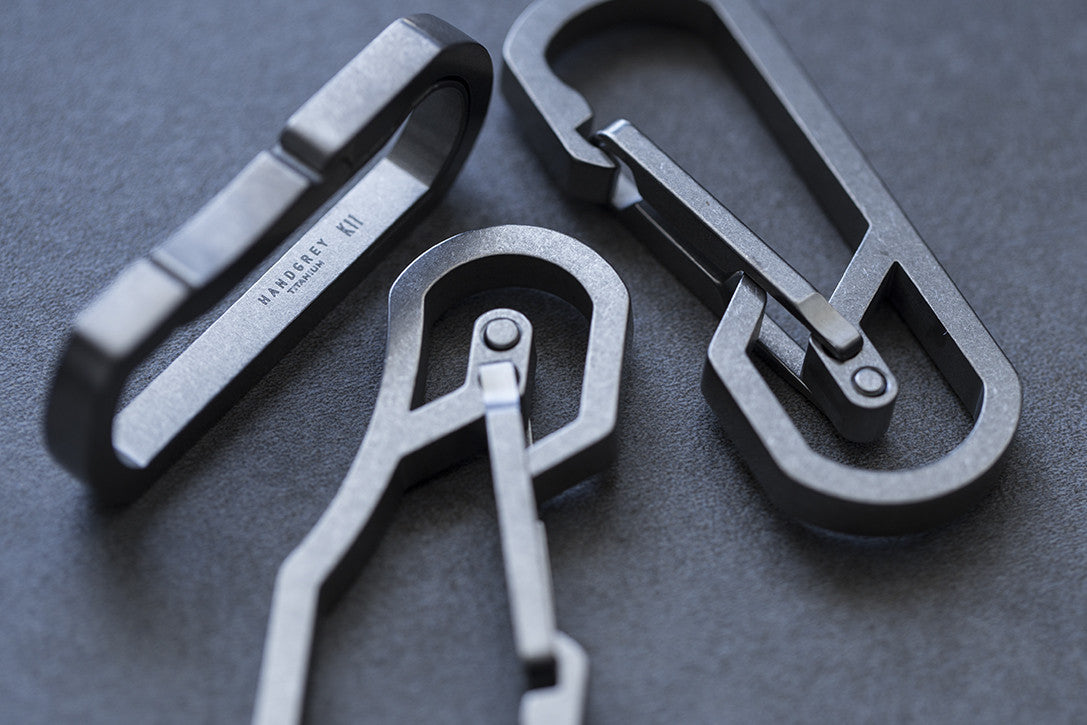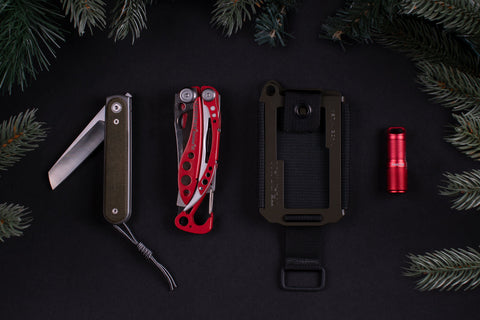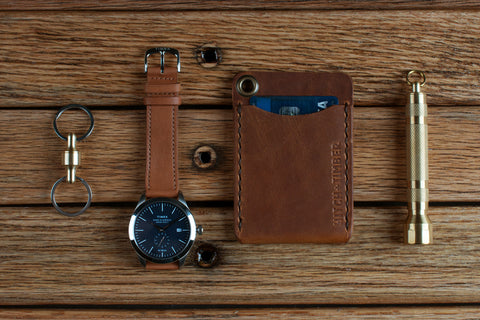The History of Carabiners

The carabiner as we know it today is chiefly used for two purposes: in the EDC world as a kind of keychain or as a load-bearing tool used for mountaineering and rock climbing. They can come in a variety of different material combinations, sizes, colors, and even - to some degree - shapes. The definition of carabiner, as it is found in the Merriam-Webster dictionary, is "an oblong metal ring with one spring-hinged side that is used especially in mountain climbing as a connector and to hold a freely running rope." Alternatively, the Oxford dictionary defines it as "a coupling link with a safety closure, used by rock climbers."
While it cannot be disputed that the carabiner has become an invaluable climbing tool, it was not - despite popular opinion - invented for scaling mountainsides. In fact, both Oxford and Merriam-Webster note this fact in the etymology and origin sections of their definitions. The word carabiner actually originates from a German term that emerged at some point between the 1920s and the 1930s. That term is Karabinerhaken. Unsurprisingly, it is still the German word for carabiner used today.
Carbine

Defy Keychain
The most literal translation of Karabinerhaken is "carabineer's hook." A carabineer (alternatively, carabinier) was a type of soldier, introduced in the mid 1600s, by French commander Jean d'Albret. They were lightly armored cavalrymen equipped with a shorter version of the more traditional muzzle-loaded long-barrel rifle, the arquebus. This smaller rifle was called a carbine (carabine, in French). And the men who carried them were aptly named carabineers. They were more mobile and versatile than normal foot soldiers, as the short barrel of the carbine would give them the freedom to ride in on horseback and they could then either fire while mounted or dismount to fight.
In order for these carabiniers to be able to haul their rifles into battle, they needed a quick- and easy-access manner of carry. So the rifles were equipped with a simple strap that was attached via a pair of hooks or clips. These hooks were the original iteration of the mountaineering keychains we now know today. The more modern version of a carabiner - with an all-metal construction and spring hinged safety gate - would not emerge until around the beginning of the 20th century.
Rambo

Handgrey H1 Titanium Carabiner
Believe it or not, John Rambo (as played by Sylvester Stallone) is not the original Rambo. That distinction actually belongs to a legendary German mountaineer by the name of Otto Herzog. His nickname, "Rambo," is a shortening of the German term Ramponieren, which means 'to batter' or 'to bash.' It was, apparently, his grit and determination in solving difficulties which earned him this moniker. Which makes sense, coming from the man who, in 1921, redefined the conventional Dülfer mountain climbing grading system - which rated climbs on a 5-point scale - by climbing the 'Ha-He Verschneidung,' a now-rated 5.10 route on the Austrian mountain, Dreizinkenspitze.
So the story goes, Rambo Herzog came up with the idea for a climbing karabinerhaken in 1910, when he saw a fire brigade wearing oblong clips on their belts. He adopted the idea into the world's first climbing carabiner, although the early versions of his invention were unreliable - the gates were made to be easily opened with one hand, but could not be depended on to remain closed during a climb.
Carrying Weight

Anso Knives Titanium Carabiner V.3
In 1938, two storied climbers - Paul Allain and Raffi Bedayn - both developed lighter and more reliable carabiners out of aluminum. While some sources report that Paul Allain's came first by a small margin, the Bedayn carabiner garnered much more notoriety and fame. This could be because Raffi Bedayn was, at the time, one of the leading rock climbers of the Sierra Club. It could also be because the Bedayn carabiner was not priced based on market value, but rather as a service to his fellow climbers.
In any case, the concept behind the carabiner has varied little since its inception in regards to basic style and shape. They are still "coupling link[s] with a safety closure," at their core. Pear-shaped carabiners are still the most common on the market, followed by their oval, more traditionally shaped counterparts. But there have been some stylistic, material, and closure innovations that have popped up here or there depending upon the intended audience.
Regarding everyday carry, the carabiner has become a much more versatile device, especially after having passed through the mind and hands of some very clever craftsmen. Now there are carabiners made from any number of combinations of materials, sizes, shapes, colors, and there are even multi-tool carabiners that offer additional functionality - most commonly things like bottle openers, pry bars, and screwdrivers. From their humble beginnings as a simple wartime gizmo, to perhaps the most important climbing innovation (next to ropes, of course), to a functional EDC addition, the carabiner has traversed a very unique path.
© Photography by Gallantry







